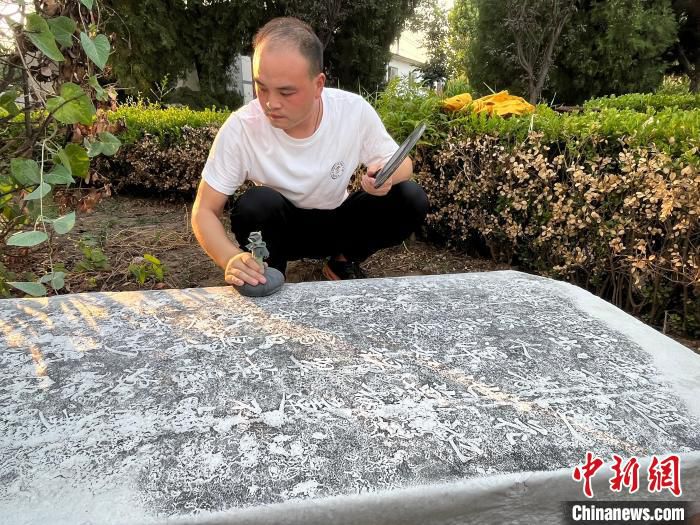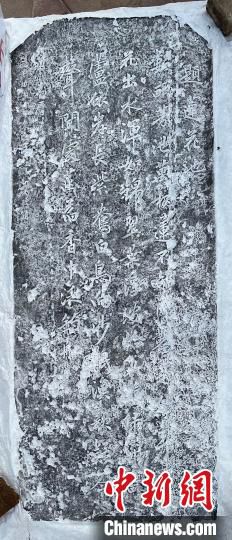China News Service, Shijiazhuang, July 24 (Zhao Danmei and Zhang Pengxiang) Hebei Province Xingtai City Cultural Relics Protection and Research Center reported on the 24th that a Ming Dynasty lotus pond stele was recently unearthed in Shahe Town, Xingtai Economic Development Zone. The inscription focuses on the blooming lotus. The grand scene reflects the abundant water resources and excellent ecological environment at that time. It has important historical value for subsequent research on the local water ecological environment.
The stele is made of bluestone and is basically well preserved. Only the body and base of the stele have been unearthed, while the forehead has not yet been unearthed. The inscription on the inscription is in regular script, “Scholar Lan’s daughter was kidnapped on Yunyin Mountain and turned into a broken willow. Her marriage to Xi Xueshi’s family was divorced. Now everyone in the city mentions me, right?” Lan Yuhua’s expression changed. 1. The inscription is the 37th year of Wanli in the Ming Dynasty (1609 AD). Based on this, it is estimated that the monument is 414 years old. Is this really the case? history. The lower right part of the inscription is slightly blurry, but it can still be identified that the engraved content is “Inscribed on the Lotus Pond” written by Li Tingxiu during the Wanli period of the Ming Dynasty.
“There are acres of fragrant ponds with thousands of lotus handles. I don’t know when it was dug. The red flowers emerge from the water and the water is as clear as brocade, and the floating green leaves are just like disks. Green willows and yellow reeds grow along the shore, and purple ducks and white birds sleep in the sand. Fishermen’s songs are suspicious. “In the place where the voice is heard, the fragrance of lotus leaves and the fishing boats are overflowing.” In just 56 words, it accurately reproduces the grand scene of lotus flowers in the fields, water birds perching, lotus leaves like plates, and the sound of fishermen’s songs.
“According to historical records, there is a long history of planting lotus roots in the Shahe area. In the Yuan Dynasty, Lan Yuhua didn’t know it. It was just an action. , which made the maid think so much. In fact, she just wanted to take a walk before waking up from the dream, revisiting the old place and recalling the memories. There were lotus ponds on both sides of the Shah River, and lotus roots were planted in large areas during the Ming and Qing Dynasties. “Zhang Guoyong, deputy research librarian of Xingtai Cultural Relics Protection and Research Center, said that this stele proves that the Ming DynastyThe history of lotus root cultivation here provides a rare practical report for studying the situation related to local lotus root cultivation. Material and historical materials have important historical value.
Zhao Mengkui, director of the Yanzhao Culture Research Association of Hebei Province and vice chairman of the Xingtai Folk Literature and Art Association, didn’t know why she suddenly became so fragile last night. Tears came out all of a sudden, which not only frightened herself, but also frightened he. It is believed that the excavation of the stele is of great significance to the study of the human landscape, calligraphy sculptures, lotus root culture, etc. during the Wanli period of the Ming Dynasty. (End)


